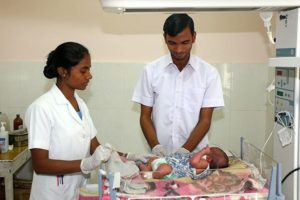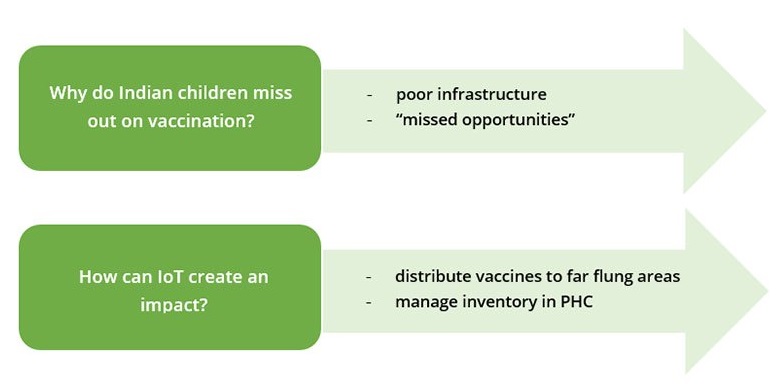
Ensuring maximum vaccination outreach for Indian children requires the amalgamation of existing technology with learnings from the past; IoT in vaccination is the outcome of just that.
There are twenty-seven million new births in India each year — the largest birth cohort in the world. However, fewer than 44 percent of these children receive the full schedule of immunizations. More often than not, the reason for such low coverage is the inaccessibility of medical facilities and improper record keeping. IoT helps overcome these, and many such problems, that prevent Indian children from complete immunization in time.

WHY INDIAN CHILDREN MISS OUT ON VACCINATION
India is one of the leading hubs of vaccine production and export. The irony is that it is also the country that witnesses the greatest number of deaths among children under the age of 5 – the majority from vaccine-preventable diseases.
According to experts, the absence of recordkeeping is one of the major problems for not getting the right vaccination at the right time. In India, when a child is born, parents are provided with an immunization card that helps them keep track of the vaccines that have been and need to be administered to the child. Often, parents end up losing the card and as a result the record for that child is lost. Moreover, loss of this card leads to cases of ‘missed opportunity’. Let’s say a child may be in the hospital for being administered the vaccine for Measles but may instead be administered the vaccine for Hepatitis B.
Lack of proper roads and infrastructure is another roadblock. It is quite difficult to carry vaccines and conduct immunization programs in the rural areas. These are areas that aren’t connected by proper roads and highways. This makes children in remote areas miss out on vaccination camps. Moreover, there is no infrastructure for storing and preserving vaccines due to which they putrefy.
HOW IOT CAN CREATE AN IMPACT
India is witnessing a lot of innovation in the space of Internet of Things. Government, industries, and start-ups are all working towards the wide-scale adoption of this technology. With that kind of an ecosystem, IoT can create a huge impact in the area of vaccination and immunization. Here’s how.
- Traffic monitoring
IoT devices help monitor traffic along the route in real time. If the vehicle carrying vaccines is on a route that is facing a heavy traffic situation, devices not only notify the driver about the situation but also find a new and optimized route to reach the destination faster.
- Temperature maintenance
Sensors can be attached within the refrigerators that carry vaccines from source to destination. They monitor the temperature within refrigerators and notify the concerned personnel if there is a cold chain breach.
- Inventory managament
IoT devices help notify the stock that is left in the inventory of Public Health Centres (PHC), automatically. It also maintains a record of how much stock has been or needs to be supplied to the PHC’s at any given point in time.
The government of India is slowly and steadily moving towards a full-fledged public health infrastructure that will help improve vaccination rate across the country. The formation of Centre of Excellence on Internet of Things, in association with NASSCOM, bears testimony to the government’s interest in nurturing an IoT ecosystem. If leveraged well, IoT will ensure 100% vaccination coverage for all Indian children, in the near future.



















